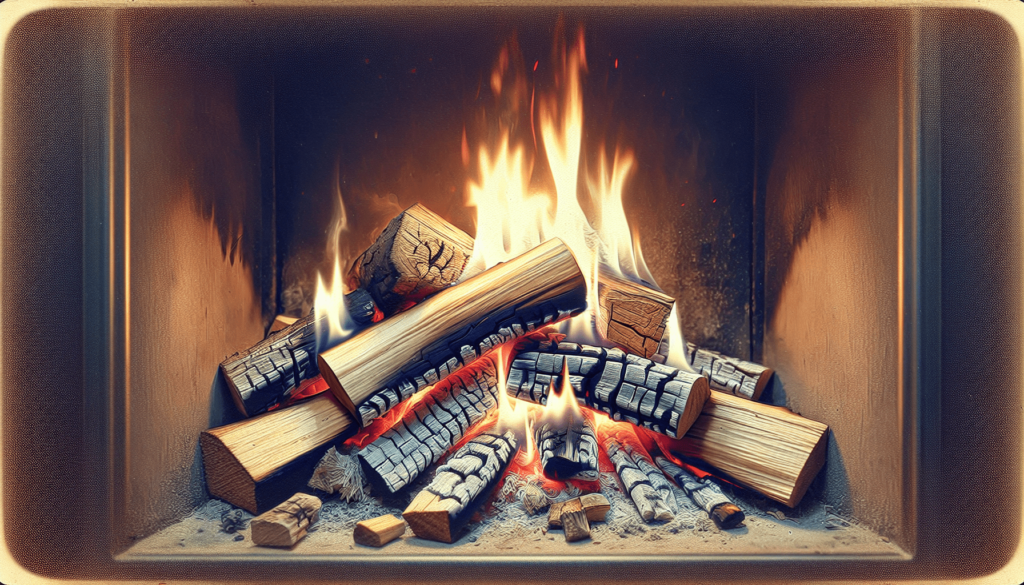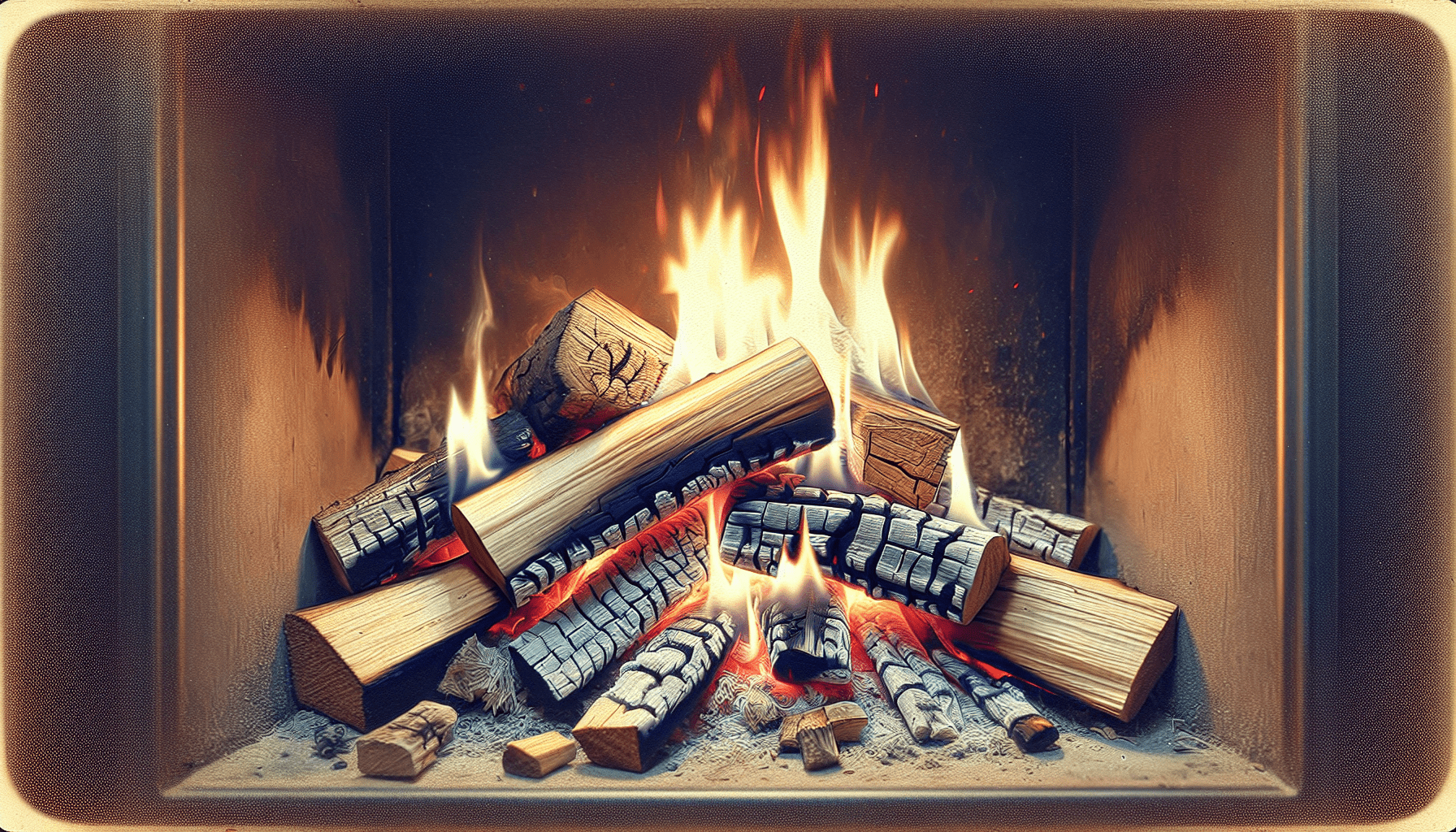Why is wood not burning properly? It’s a question that probably plagues you more often than you’d care to admit, particularly on those cold winter nights when you’re desperate for the comforting warmth of a fire. You’ve dutifully followed all the steps: got yourself some firewood, lit it, and then… zip, zilch, nada. Your romantic evening in front of a roaring fire is rapidly turning into an evening in front of a smoky, smoldering mess. So, what gives?

The Science of Burning Wood
Let’s start by understanding the basics. Wood doesn’t just burn by tossing a match at it. There’s a bit of science magic that goes on behind the scenes.
What is Combustion?
Combustion, or burning, happens when wood reacts with oxygen in the air to produce heat and light. Sounds simple enough, right? Sort of. You need three things for combustion: heat, fuel (wood), and oxygen. If one of these elements is out of whack, you’re going to run into problems.
The Role of Moisture
One of the most common reasons why your wood isn’t burning properly is moisture content. Even the slightest bit of water in your wood can make it incredibly hard to ignite.
Here’s a table that breaks down the moisture content levels and their effects:
| Moisture Content (%) | Effect on Burning |
|---|---|
| Below 20% | Ideal for burning |
| 20% – 25% | Can burn, but with difficulty |
| Above 25% | Too wet, won’t burn properly |
There’s no way around it; wet wood will kill your fire faster than a poorly thrown bucket of water.
Types of Firewood: Not All Wood is Created Equal
When it comes to burning wood, species matter. Hardwoods and softwoods burn differently and knowing the difference can change your fire-starting game.
Hardwoods vs. Softwoods
Hardwoods like oak, maple, and hickory are dense and burn longer and hotter. Softwoods like pine and spruce ignite quickly but burn out just as fast. Here’s a quick comparison:
| Type of Wood | Burn Duration | Heat Output | Ease of Ignition | Typical Uses |
|---|---|---|---|---|
| Hardwoods | Long | High | Moderate | Long-lasting fires |
| Softwoods | Short | Low | Easy | Kindling, quick fires |
If you’re using softwoods for a long-term fire, you may need to add more logs much more frequently than with hardwoods.
Proper Wood Preparation
The way you prepare your wood can also have a huge impact on its burn quality.
Seasoning Your Wood
Seasoned wood is just wood that’s been dried out. Simple enough, but it requires a bit of patience.
How to Season Wood:
- Cut and Split: Cut your logs into manageable pieces and split them.
- Stack: Stack the wood in a criss-cross pattern to allow air circulation.
- Cover: Cover the top but leave the sides exposed.
- Wait: Depending on the type of wood, this can take anywhere from six months to two years.
Always aim for wood that’s been seasoned for at least six months. If you can hit a year, even better.
Fire Build Techniques: Building the Perfect Fire
If you’re struggling with getting the fire going or keeping it burning, the way you build the fire could be the culprit.
The Teepee Method
The teepee method is great for starting fires because it allows maximum airflow.
- Kindling: Put some kindling (small sticks and twigs) in the center.
- Arrange Logs: Arrange your logs around the kindling in a teepee shape.
- Light: Light the kindling and let the flames spread to the logs.
The Log Cabin Method
If you’re aiming for a longer-lasting fire, the log cabin method could be your go-to.
- Base Layer: Place two larger logs parallel to each other.
- Next Layer: Lay two more logs perpendicular on top of the first two.
- Kindling: Place kindling in the center.
- Light: Ignite the kindling and let the fire grow.
Both methods can be effective, but the log cabin method tends to last longer because of its structure.

Common Pitfalls and How to Avoid Them
Now that we’ve gotten into the nitty-gritty of wood types, moisture content, and fire-building techniques, let’s talk about some common pitfalls and how to avoid them.
Choosing the Wrong Wood
One of the top reasons your fire isn’t burning properly might be because of the type of wood you’re using. Always make sure you’re using seasoned hardwood for the best results. Softwoods should be reserved for kindling only.
Poor Stack Technique
Sloppy stacking can ruin your efforts. Ensure your stack allows for proper air circulation and is protected from moisture.
Overloading the Fire
It’s tempting to just throw a pile of wood into the fire and call it a day. But overloading can suffocate the flames. Always add logs gradually and ensure that there’s enough airflow.
Troubleshooting: When It All Goes Wrong
Despite your best efforts, sometimes things just don’t go as planned. Here are a few quick fixes for some common problems.
Smoky Fire
A smoky fire is usually a sign of wet wood or inadequate airflow. Make sure you’re using dry wood and check that your fireplace or fire pit is allowing for proper ventilation.
Fire Won’t Start
This can be super frustrating. First, check your kindling; too little, and it won’t catch. Also, make sure there’s enough airflow and that the wood is dry.
Fire Dies Quickly
If your fire is dying out quickly, you likely need bigger logs—or maybe better stacking technique. Ensure that logs are close enough to sustain the flames but not so packed that they suffocate it.
Fire Is Too Hot or Too Cold
Balancing your fire’s temperature can be tricky. If it’s too hot, you may be overloading it with kindling or smaller logs. If it’s too cold, you might need bigger hardwood logs to sustain a hotter flame.
Additional Tips for Wood Burning Success
Here’s a little more for good measure—additional tips that’ll make you the master of your wood-burning domain.
Fire Starters
Commercial fire starters can be a lifesaver. They’re especially useful if your kindling is a bit on the damp side or if you’re just not getting the desired flame. Even a small one can make a big difference.
Check Your Chimney or Vent
Having a clean, well-functioning chimney or vent can make a world of difference in how your fire burns. Creosote buildup, blockages, or even design flaws in your chimney can all hinder a good burn. Regular maintenance is key.
Altitude Considerations
Believe it or not, altitude impacts how well your fire burns. At higher altitudes, the air is thinner, which means less oxygen. If you live in a high-altitude area, you might need to build your fire a little differently and use highly combustible materials to get things started.
Safety First
Last but absolutely not least, always keep safety in mind. Never leave a fire unattended, keep a fire extinguisher or bucket of water nearby, and make sure your smoke detectors are functional.
Final Thoughts
Fire, for all its simplicity, is a bit of a drama queen. It demands the right conditions, perfect materials, and a gentle touch. But once you master it, nothing beats the warmth and comfort of a properly burning fire. If you take the time to understand the nuances—moisture content, wood types, preparation, and fire-building techniques—you’ll find that it’s really not that difficult to get it right.
So next time you’re huddled up next to a smoldering mess, remember these tips. A good fire is not just about the wood itself, but the care and preparation you put into it. Happy burning!
Feel free to share your own fire-building struggles and successes! I’m curious to know if these tips help you out.

